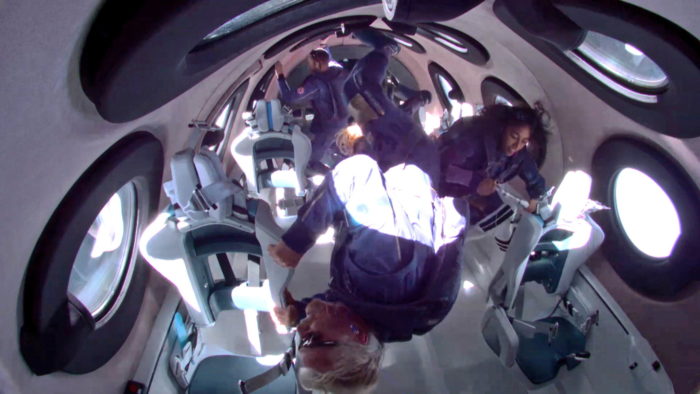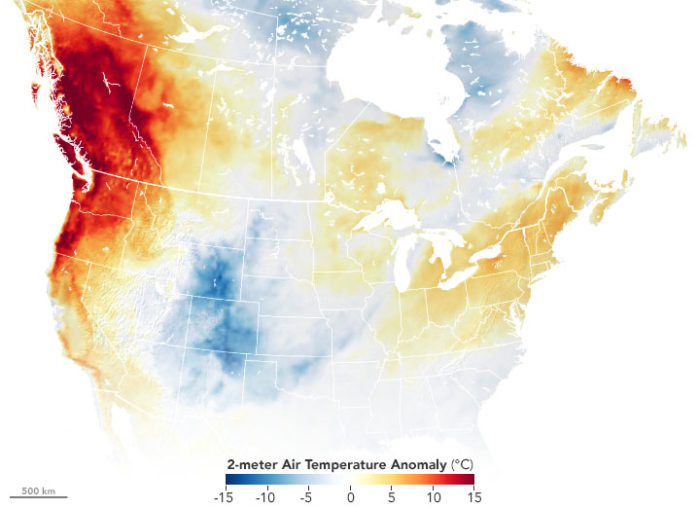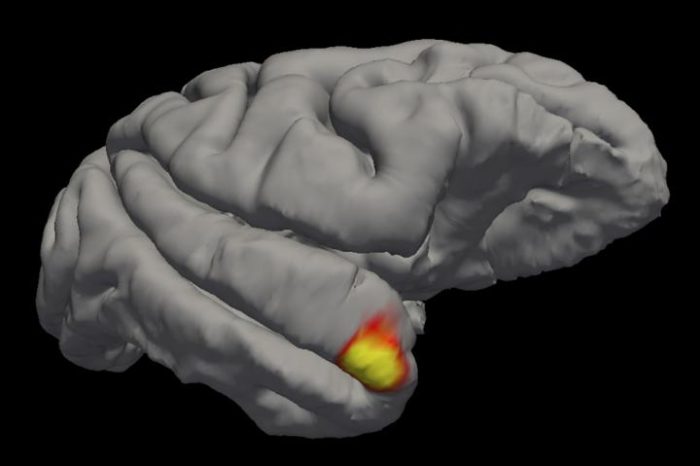Jul
13
2021
 Regardless of whether or not you are a cat person or a dog person (I have both as pets, as well as a reptile, and have had birds and fish), there is no denying that dogs are excellent human companions. No other animal known is capable of the same relationship with people. Researchers have been trying to understand the origin of this special relationship, with some interesting results.
Regardless of whether or not you are a cat person or a dog person (I have both as pets, as well as a reptile, and have had birds and fish), there is no denying that dogs are excellent human companions. No other animal known is capable of the same relationship with people. Researchers have been trying to understand the origin of this special relationship, with some interesting results.
First let me review the results of a new study, and then add in some background. The question the researchers are trying to address is this – how much of dog behavior is shared with their wolf ancestors? Specifically, dogs and wolves share a common ancestor between 12,000 and 40,000 years ago. There was likely a lot of interbreeding during this time (as there still is) so it’s probably not possible to declare a clean break. But they are now distinct subpopulations. Dogs show an incredible ability to understand their human companions, even without extensive training. The question is – how much of this ability is innate vs trained and how much is shared with wolves?
The study compared 44 dog pups with 37 wolf pups right after birth. The wolf pups were raised by humans, with maximal human contact after just a few days from birth. The dog pups were kept with their litters with minimal human contact. They were assessed at 5-18 weeks old. The authors found that the dog pups were able to follow human direction (such as pointing and other cues) toward a food reward. The wolf pups did no better than chance, indicating no benefit from the human cues. Dog pups were also able to respond to novel cues, like playing a block next to the target bowl. Further, when a stranger was introduced the dog pups came up and interacted with them (wagging their tail and licking their face) while the wolf pups when into a corner and hid.
None of this is surprising, and it is all consistent with prior research. But it does help confirm that these stark differences are innate, and not learned. So what’s going on?
Continue Reading »
Jul
12
2021
 A common theme that emerges when writing about science and technology is that often the most important factor in determining if and how a technology is adapted is not the tech itself. Economics is often the overriding factor. People will tend to take the most efficient and least expensive route to any goal. We don’t usually do things just because we can. This is why it is so important that the market places a fair and proper price on goods and services without significant distortion. Distorted market forces (like allowing companies to externalize real costs of their business) will produce distorted outcomes. (Government regulation is used when efficiency is not the only desired outcome. We also want a clean environment, justice, and protection of minors, for example.)
A common theme that emerges when writing about science and technology is that often the most important factor in determining if and how a technology is adapted is not the tech itself. Economics is often the overriding factor. People will tend to take the most efficient and least expensive route to any goal. We don’t usually do things just because we can. This is why it is so important that the market places a fair and proper price on goods and services without significant distortion. Distorted market forces (like allowing companies to externalize real costs of their business) will produce distorted outcomes. (Government regulation is used when efficiency is not the only desired outcome. We also want a clean environment, justice, and protection of minors, for example.)
This is why recent developments have been exciting for space enthusiasts, who have long accepted that the route to a robust space infrastructure requires commercialization of space. Big government programs will pave the way, bootstrapping the technology, but will likely not be able to sustain a space industry. The moment going to space becomes profitable, we will truly enter the space age. And one industry well positioned to be on the leading edge of commercialization is tourism.
All this is why the recent trip to the edge of space by Virgin Galactic is noteworthy. The ship is designed as a space plane, that takes off horizontally like a traditional jet. There is a carrier portion, named White Knight, which carries the actual ship, Spaceship 2, in the middle section (the mission itself was dubbed Unity 22). At 15 km the ships separated. Spaceship 2 then rocketed up to an altitude of 80 km. “Space” is considered to begin at 100 km (at the Kármán line), so this was technically not into space (therefore the oft-cited “edge of space”). Also, this was a suborbital flight, not capable of getting into orbit around the Earth. The maximum altitude of Spaceship 2 is about 90 km, so it is not capable of orbital flight.
Continue Reading »
Jul
09
2021
 It has become a mantra of climate scientists that global warming is just what it says – global. It is a statistical average over time. It cannot be tied to any specific weather event, even if it predicts that statistically such events are more likely. However, the current heat wave in the North American Northwest is so statistically extreme, that climate scientists are discussing it in very different terms. For example, the BBC reports:
It has become a mantra of climate scientists that global warming is just what it says – global. It is a statistical average over time. It cannot be tied to any specific weather event, even if it predicts that statistically such events are more likely. However, the current heat wave in the North American Northwest is so statistically extreme, that climate scientists are discussing it in very different terms. For example, the BBC reports:
Its initial calculations suggest the odds of the sort of temperatures experienced in Canada occurring without climate change are very low indeed, says Professor Stott.
“It is telling us that changes in average climate are leading to rapid escalation not just of extreme temperatures, but of extraordinarily extreme temperatures,” he adds.
It’s like that UFO meme – “We’re not saying it’s global warming, but it’s global warming.” They can still only make statistical statement, but the probability of such an extreme heat wave is vanishingly small without AGW. This was the hottest June on record in North America. It was the fourth hottest June on record for the world. According to NOAA, 2020 was the second hottest year globally on record, just behind 2016.
Remember, 10-20 years ago, when the global warming deniers were saying that we haven’t had any global warming since 1998? They did a little cherry picking and chose 1998 as a baseline because it was a peak in the short term fluctuations caused by El Nino. It created the illusion that the warming trend had stopped, but it was always nonsense. But they used that to predict that global warming had stopped, that it was always just part of the natural cycle, and was regressing to the mean. Nothing to see here.
Continue Reading »
Jul
08
2021
 I have been hearing about hydroponics – the growing of plants in water without the use of soil – for my whole life. Epcot showcased them decades ago as the farming of the future. Hydroponic farming exists. I can buy hydroponic lettuce at the supermarket. But despite the hype, it remains a small percentage of global agriculture. Hydroponics appears to be experiencing some rapid growth, however. In 2020 the global market was estimated to be $9.3 billion, and projected to almost double by 2026.
I have been hearing about hydroponics – the growing of plants in water without the use of soil – for my whole life. Epcot showcased them decades ago as the farming of the future. Hydroponic farming exists. I can buy hydroponic lettuce at the supermarket. But despite the hype, it remains a small percentage of global agriculture. Hydroponics appears to be experiencing some rapid growth, however. In 2020 the global market was estimated to be $9.3 billion, and projected to almost double by 2026.
Modern hydroponics can be traced to botanist Julius von Sachs who in 1860 published the nutrient mixture necessary to add to water, demonstrating for the first time exactly which nutrients plants needed to grow. Since then several hydroponic systems have been developed and today modern hydroponics is very sophisticated, with precise nutritional and environmental control to optimize growing.
The potential advantages of hydroponics sound very impressive, with the only real downside is that startup costs can be high and overall price of produce is higher than conventional farming. The reason hydroponics remains niche is that it may not be as economically viable, but as systems improve this is changing. The other clear downside is that hydroponics uses much more energy. Conventional farming is mostly powered by the sun, where hydroponic farming relies heavily on grow lights. A 2015 estimate found that hydroponics used 11 times the energy of conventional farming. Here are the advantages:
Hydroponic farming allows for vertical farming, because it is not dependent on the soil. This allows for greater plant yield per unit of land, which is becoming farming’s most precious resource. Estimates of the land advantage depend on the crop and the height of the vertical farm, so there is no one figure, but it varies from several times to hundreds of times the yield of soil-based farming. Vertical hydroponic farms can be designed for optimal land use if desired, easily resulting in hundreds of times the yield of soil-based farming.
Continue Reading »
Jul
06
2021
 People are really good at recognizing faces. One of my lecture bits is to show a picture of a famous person for a fraction of a second (as fast as I can make the picture cycle in Powerpoint). The vast majority of the audience has no problem placing this face in their memory from just a quick glance. How does the brain accomplish this feat? That is something that neuroscientists are still working out. We already have a lot of information about the visual cortex and how it puts images together. We also know that the fusiform gyrus is essential for facial recognition. This brain structure lies at the junction of the occipital lobe, where the visual cortex is, and the medial temporal lobe which is involved with memory.
People are really good at recognizing faces. One of my lecture bits is to show a picture of a famous person for a fraction of a second (as fast as I can make the picture cycle in Powerpoint). The vast majority of the audience has no problem placing this face in their memory from just a quick glance. How does the brain accomplish this feat? That is something that neuroscientists are still working out. We already have a lot of information about the visual cortex and how it puts images together. We also know that the fusiform gyrus is essential for facial recognition. This brain structure lies at the junction of the occipital lobe, where the visual cortex is, and the medial temporal lobe which is involved with memory.
What is not well understood is exactly how the visual cortex connects to memory – how do we recognize familiar faces? One hypothesis is somewhat dismissively known as “the grandmother neuron”, based on the idea that one neuron would encode the face of your grandmother and connect that pattern with your memories of your grandmother. No such neuron has been discovered, and advances in neuroscience have led to the conclusion that it likely never will be. One neuron is insufficient to encode something as complex as a human face.
But perhaps there is a region or a circuit or network in the brain that serves this function. Neuroscientists may have zeroed in on the brain region that functions like the grandmother neuron. They studied macaque monkeys, exposing them to pictures of faces they have seen in person and other they have not seen before except digitally. When pictures of faces they have seen before were displayed the temporal pole (front tip of the temporal lobes) lit up on fMRI scanning. This cluster of cells also responded “non linearly” when increasing amounts of a familiar faces were shown, implying that the whole pattern is greater than the sum of its parts. Further, when distinctive parts of a face were show they lit up as if the entire face were show. This could indicate that once sufficient detail were shown to trigger the memory of the entire face, full activity of that region was then engaged.
Continue Reading »
Jul
01
2021
 I know I just wrote about CRISPR, the powerful gene-editing tool that can make targeted specific alterations to genes, but there is another CRISPR news item I wanted to write about. A recent study published in the NEJM reports the results of a treatment trial using a CRISPR-Cas9 treatment injected into the blood. This is an important proof of concept with implications for the clinical impact of CRISPR.
I know I just wrote about CRISPR, the powerful gene-editing tool that can make targeted specific alterations to genes, but there is another CRISPR news item I wanted to write about. A recent study published in the NEJM reports the results of a treatment trial using a CRISPR-Cas9 treatment injected into the blood. This is an important proof of concept with implications for the clinical impact of CRISPR.
The study itself involved a rare genetic disease called Transthyretin amyloidosis, also called ATTR amyloidosis, which results from the creation of a misfolded protein that causes damage primarily to nerves and heart tissue. From a genetics point of view, this is conceptually straightforward – turn off the gene making the toxic protein and that should fix the problem. CRISPR is really good at that – it can target the specific gene and then makes cuts in that gene to permanently disable it.
While CRISPR technology is extremely powerful, perhaps the bigger challenge is getting the CRISPR-Cas9 into the desired cells. It is easy to do this in vitro (outside the body in a test tube or dish) but harder to get the CRISPR to the correct cells in a living organism. For this we have been relying primarily on viral vectors, viruses which infect cells, delivering the CRISPR.
Continue Reading »
 Regardless of whether or not you are a cat person or a dog person (I have both as pets, as well as a reptile, and have had birds and fish), there is no denying that dogs are excellent human companions. No other animal known is capable of the same relationship with people. Researchers have been trying to understand the origin of this special relationship, with some interesting results.
Regardless of whether or not you are a cat person or a dog person (I have both as pets, as well as a reptile, and have had birds and fish), there is no denying that dogs are excellent human companions. No other animal known is capable of the same relationship with people. Researchers have been trying to understand the origin of this special relationship, with some interesting results.
 A common theme that emerges when writing about science and technology is that often the most important factor in determining if and how a technology is adapted is not the tech itself. Economics is often the overriding factor. People will tend to take the most efficient and least expensive route to any goal. We don’t usually do things just because we can. This is why it is so important that the market places a fair and proper price on goods and services without significant distortion. Distorted market forces (like allowing companies to externalize real costs of their business) will produce distorted outcomes. (Government regulation is used when efficiency is not the only desired outcome. We also want a clean environment, justice, and protection of minors, for example.)
A common theme that emerges when writing about science and technology is that often the most important factor in determining if and how a technology is adapted is not the tech itself. Economics is often the overriding factor. People will tend to take the most efficient and least expensive route to any goal. We don’t usually do things just because we can. This is why it is so important that the market places a fair and proper price on goods and services without significant distortion. Distorted market forces (like allowing companies to externalize real costs of their business) will produce distorted outcomes. (Government regulation is used when efficiency is not the only desired outcome. We also want a clean environment, justice, and protection of minors, for example.) It has become a mantra of climate scientists that global warming is just what it says – global. It is a statistical average over time. It cannot be tied to any specific weather event, even if it predicts that statistically such events are more likely. However, the current heat wave in the North American Northwest is so statistically extreme, that climate scientists are discussing it in very different terms. For example,
It has become a mantra of climate scientists that global warming is just what it says – global. It is a statistical average over time. It cannot be tied to any specific weather event, even if it predicts that statistically such events are more likely. However, the current heat wave in the North American Northwest is so statistically extreme, that climate scientists are discussing it in very different terms. For example,  I have been hearing about hydroponics – the growing of plants in water without the use of soil – for my whole life. Epcot showcased them decades ago as the farming of the future. Hydroponic farming exists. I can buy hydroponic lettuce at the supermarket. But despite the hype, it remains a small percentage of global agriculture. Hydroponics appears to be experiencing some rapid growth, however. In 2020 the global market
I have been hearing about hydroponics – the growing of plants in water without the use of soil – for my whole life. Epcot showcased them decades ago as the farming of the future. Hydroponic farming exists. I can buy hydroponic lettuce at the supermarket. But despite the hype, it remains a small percentage of global agriculture. Hydroponics appears to be experiencing some rapid growth, however. In 2020 the global market  People are really good at recognizing faces. One of my lecture bits is to show a picture of a famous person for a fraction of a second (as fast as I can make the picture cycle in Powerpoint). The vast majority of the audience has no problem placing this face in their memory from just a quick glance. How does the brain accomplish this feat? That is something that neuroscientists are still working out. We already have a lot of information about the visual cortex and how it puts images together. We also know that
People are really good at recognizing faces. One of my lecture bits is to show a picture of a famous person for a fraction of a second (as fast as I can make the picture cycle in Powerpoint). The vast majority of the audience has no problem placing this face in their memory from just a quick glance. How does the brain accomplish this feat? That is something that neuroscientists are still working out. We already have a lot of information about the visual cortex and how it puts images together. We also know that  I know
I know 




